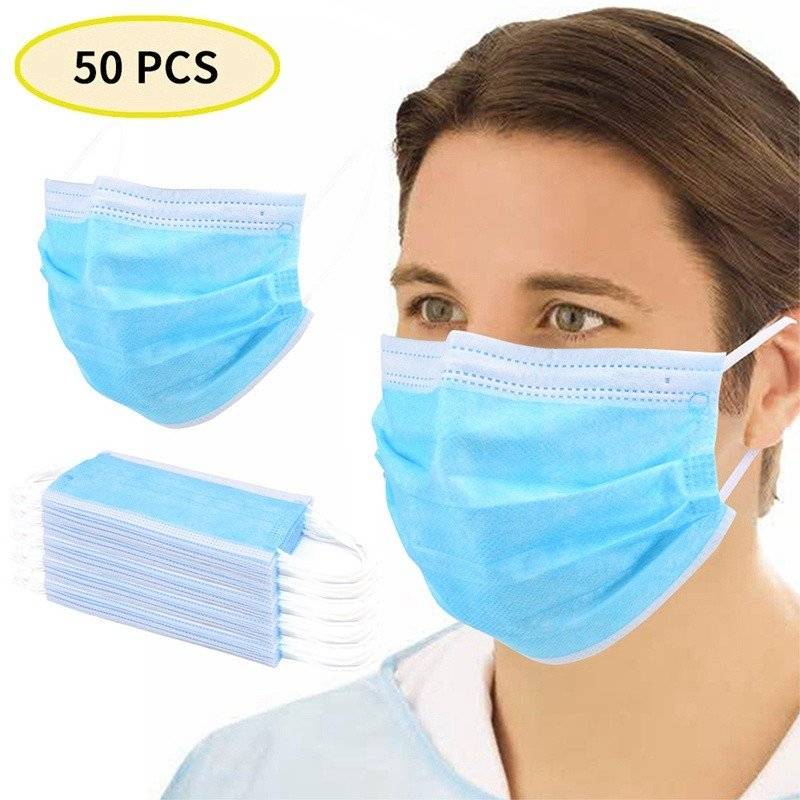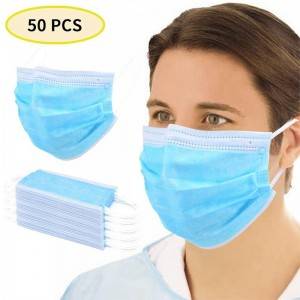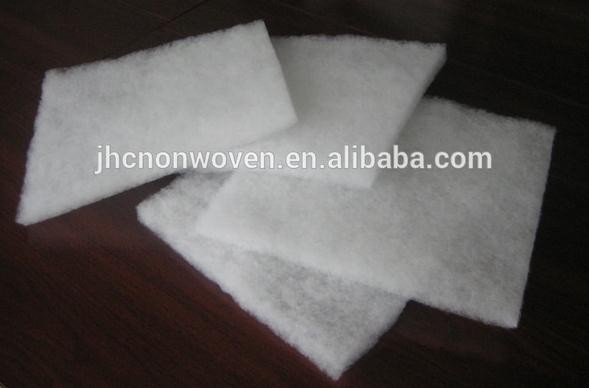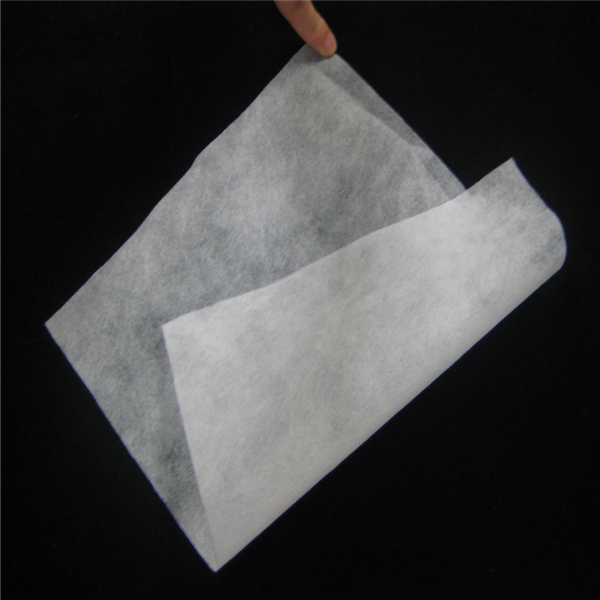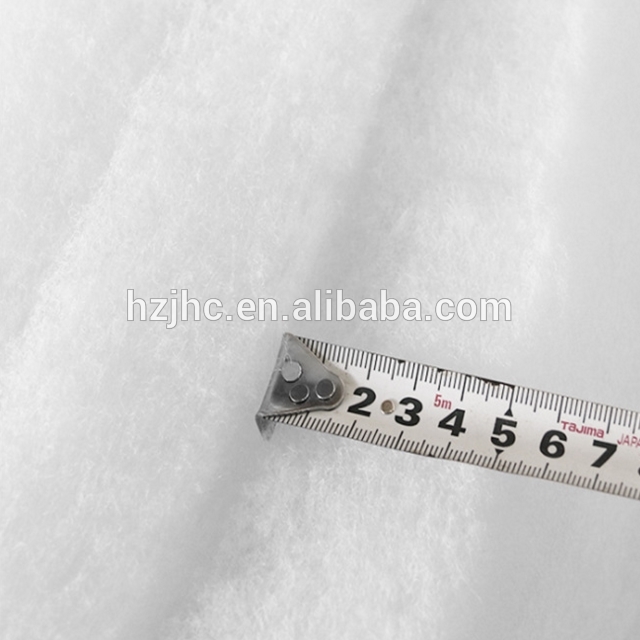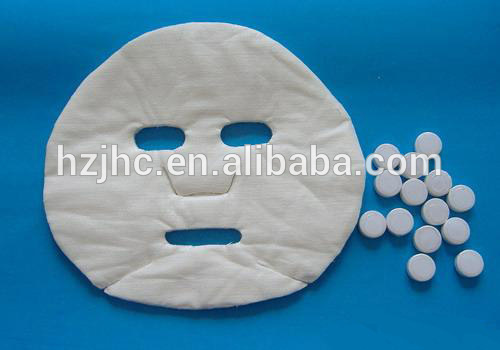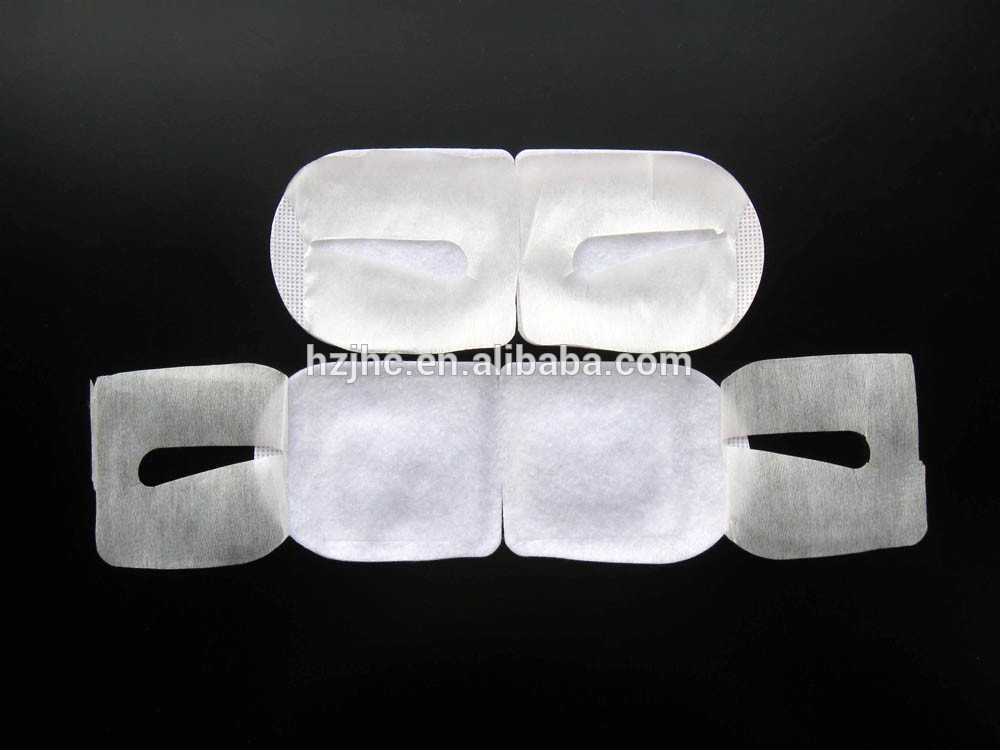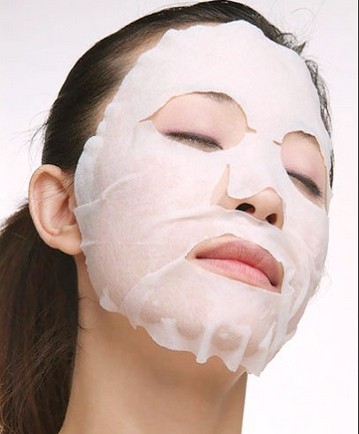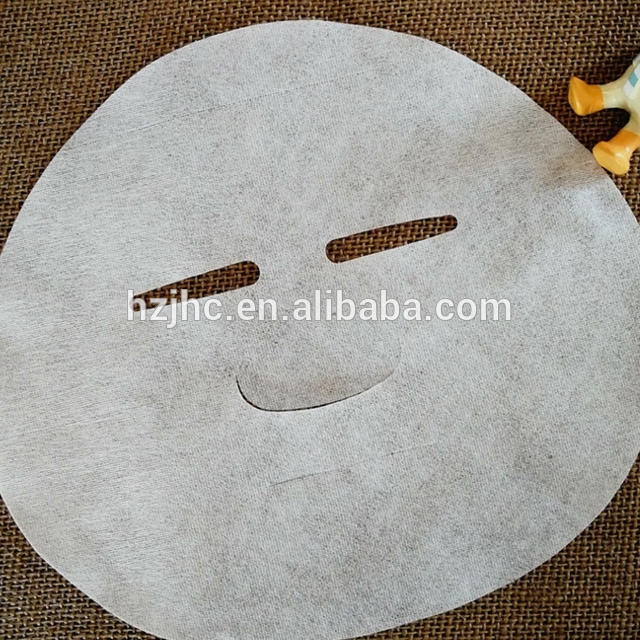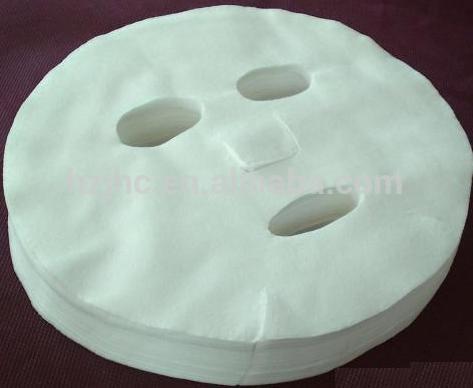The correct way to choose medical masks | JINHAOCHENG
material, under the specified conditions, the disposable medical mask body can filter out particulate matter. The larger the value, the higher the protection level and the greater the respiratory resistance. Masks can be divided into three levels, the lowest filtration efficiency of 95% is 95%, the lowest filtration efficiency of 99 is 99%, and the lowest filtration efficiency of 100 is 99.97%.
According to the standard classification, the N marked on the mask represents the American standard, FFP is the European standard, and KN is the Chinese standard.
FFP European standard masks are certified by the European Standards Committee for respiratory protective equipment. The standard is to divide the particulate protection filter material into solid particle protection and liquid particle protection, which are tested and classified by NaCL (sodium chloride) and DOP (paraffin oil) aerosols. The role is to absorb harmful aerosols, including dust, smoke, mist, poisonous gas and poisonous vapor, etc. through the filter material, blocking them from being inhaled by people. Qualified solid particle protection filter materials are divided into three levels: P1 (FFP1), P2 (FFP2), and P3 (FFP3) according to the tested particle penetration rate. The minimum filtering effect of FFP1 is ≥80%, and the minimum filtering effect of FFP2 is ≥94%. , FFP3 minimum filtering effect ≥97%.
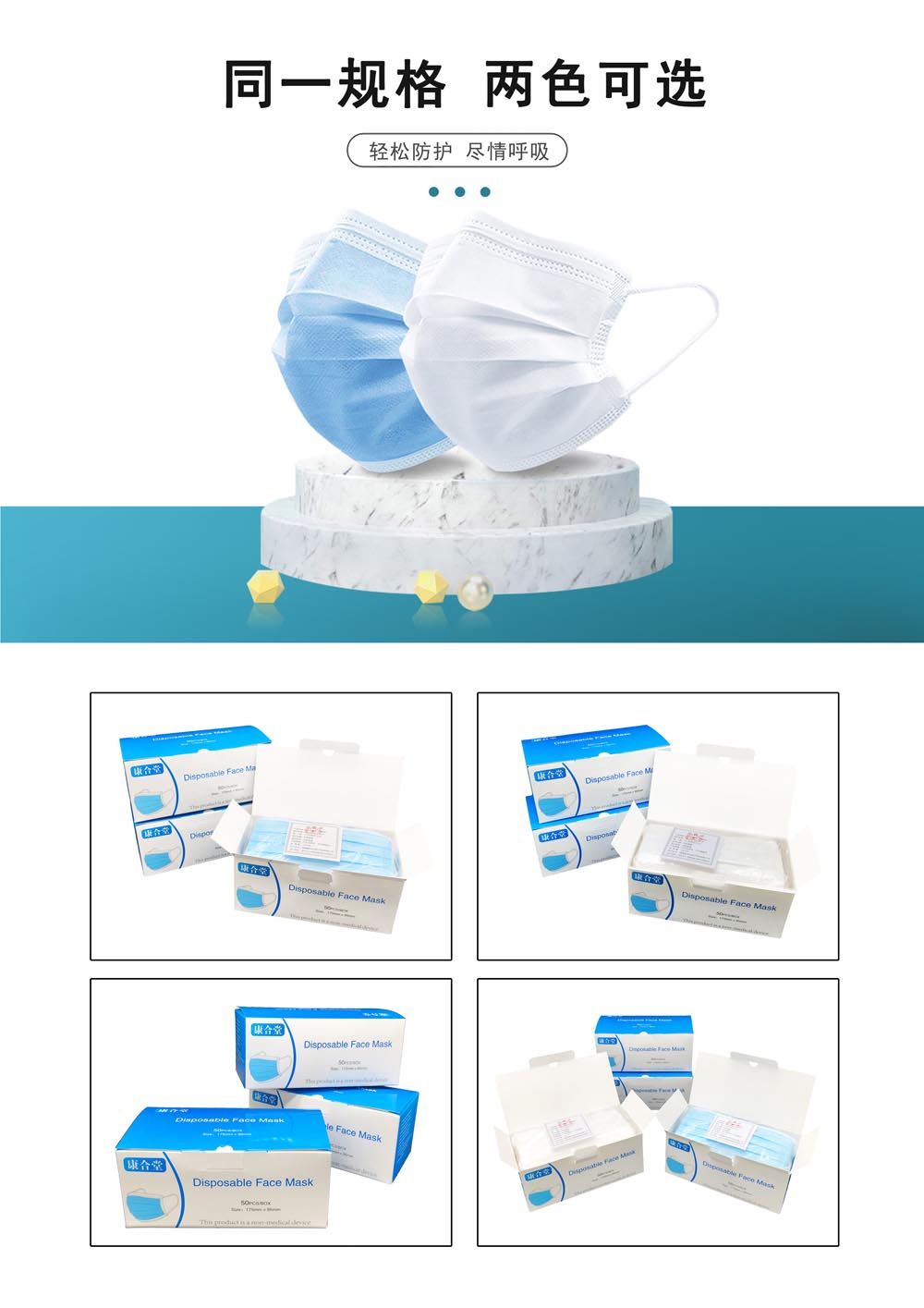
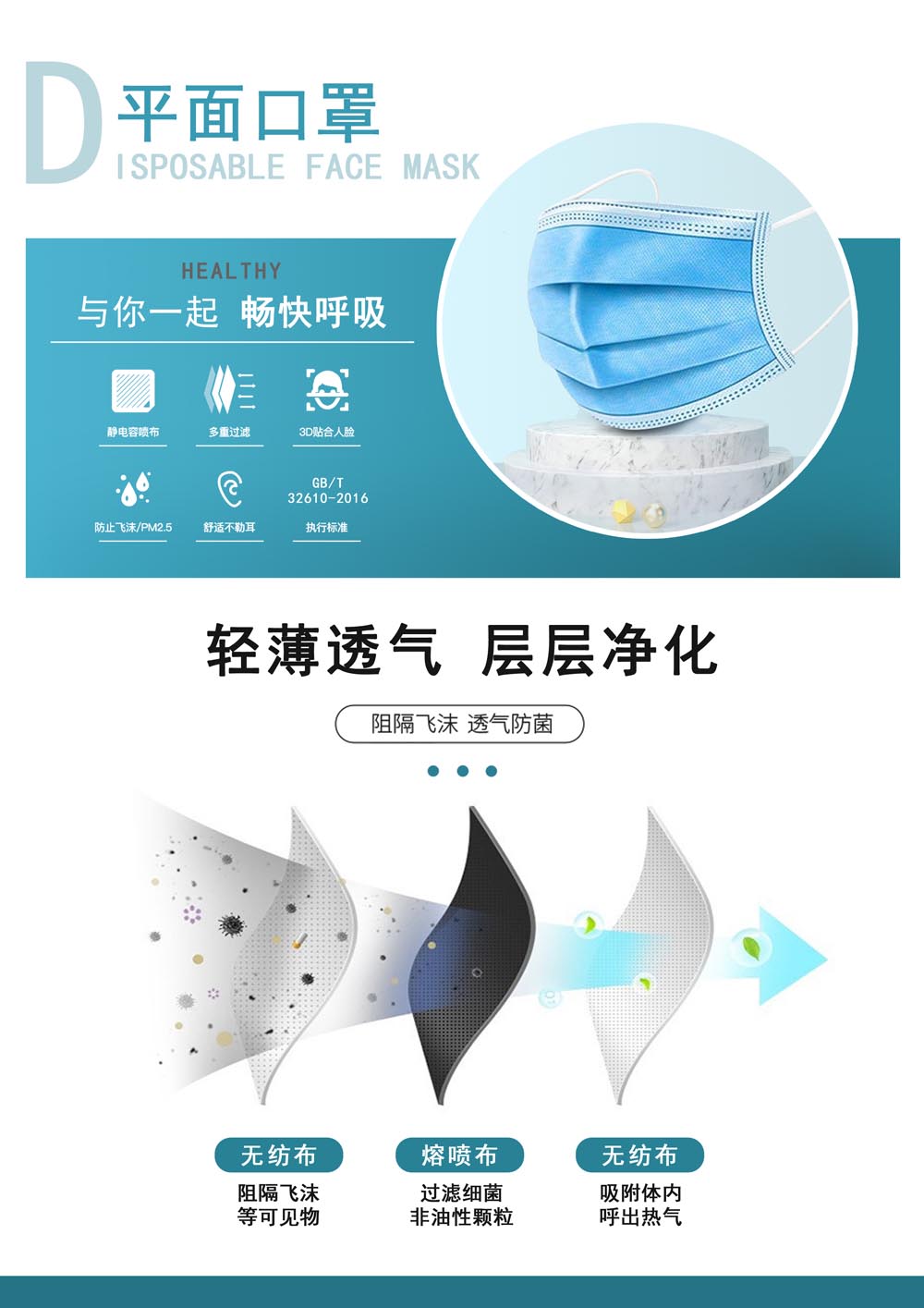 According to the minimum filtration efficiency of the filter
According to the minimum filtration efficiency of the filter
American standard masks are graded by the National Institute of Occupational Safety and Health (NIOSH) for their filter material and filtration efficiency. The American NIOSH 42CFR-84 standard has the highest degree of recognition in the world.
According to the filter material of the middle layer of the mask, there are three types:
N stands for Not resistant to oil, which can protect against non-oily suspended particles. For example, the oily fume produced by cooking is oily particles, while the droplets produced by people talking or coughing are not oily. Generally, non-oily particulate matter refers to coal dust, cement dust, acid mist, microorganisms, etc. In the current haze pollution, most of the suspended particles are non-oily. Oily particulate matter refers to oil fume, oil mist, asphalt fume, etc.
R stands for Resistant to oil, which can protect non-oily and oily suspended particles, but when used for oily particles, the use time should not exceed 8 hours.
P stands for Oil Proof, which can protect against non-oily and oily suspended particles. Compared with the R series, the P series can be used for a relatively long time, depending on the manufacturer's label.
In this way, it is easy to understand what an N95 mask is. The N95 mask is tested with 0.3 micron sodium chloride particles, and the barrier rate must be above 95%. When the wearer’s face is tested for tightness, it is ensured that air can enter and exit through the mask when it is close to the edge of the face. N95 certification number is issued for this test.
KN is a Chinese standard, and its detection method is the same as that of the United States. According to my country's GB2626-2006 standard, masks are divided into KN and KP categories. KN means masks are suitable for filtering non-oily particles, and KP means masks are suitable for filtering oily particles. And non-oily particles. The number after the letter represents the protection level of the mask, the larger the number.
How should the protection level be converted between the three different standard masks? Obviously, EU FFP can filter non-oily and oily particles at the same time, while N and KN in the United States and China can only effectively filter non-oily particles.
Therefore, their protective effect formula is roughly: FFP3>FFP2=N95=KN95>KN90
1. Ordinary medical masks are used to block the splashes exhaled from the oral cavity and nasal cavity, and can be used for one-time hygiene care in ordinary medical environments with the lowest level of protection. It is suitable for general health care activities, such as sanitation, liquid preparation, cleaning bed units, etc., or barrier or protection of particles other than pathogenic microorganisms such as pollen.
The most effective role of 95 masks is to prevent and control the spread of severe respiratory diseases, such as SARS or influenza and the outbreak of the new coronavirus. You can choose masks marked with KN95, N95, FFP2 and above standards.
2. Studies have shown that within the pre-specified range, surgical masks are no worse than KN95/N95 masks in preventing influenza. Zhong Nanshan, the leader of the high-level expert group of the National Health Commission to fight SARS, also said, "In fact, it is not necessary to wear N95 masks. General masks can block most of the virus-laden droplets from entering the respiratory tract and prevent the new coronavirus. , It’s useful to wear a mask.” So if you can’t buy an N95 mask, you can choose a general surgical mask.
5. KN95/N95 masks are divided into two types, one is biological respirator and the other is dust respirator.
Their protection levels are the same, but the implementation standards are different. The standard for bio-protective masks (medical KN95) is GB19083-2010 "Technical Requirements for Medical Protective Masks", which is used in the medical and health industries, such as epidemic prevention stations, hospitals, and disease control centers. The dust respirator (KN95) implements the standard GB2626-2006 "Respiratory Protective Equipment Self-priming Filtered Anti-Particulate Respirator", which is used in industries such as coal mining, petroleum processing, mining and other industrial and mining enterprises.
If you are using it in an ordinary environment, you can choose the KN95 (or N95 if it is the American standard) mask of GB2626-2006. If it is a medical institution or contact with infected people, it is necessary to prevent flying caused by the patient's body fluid or blood splash. If you are infected with foam, you must use KN95 masks that implement the GB19083-2010 standard.
To sum up, in a relatively high-risk environment, the masks that can effectively prevent respiratory infections are medical protective masks and medical surgical masks. Medical protective masks, also known as medical KN95, are suitable for use by medical staff in fever clinics, isolation wards, and confirmed patients when they are transferred. Medical surgical masks are suitable for wearing suspected cases. They are worn by public transportation officers and passengers, taxis, drivers, sanitation workers, and service personnel in public places.
Attach precautions for using masks:
1. When used for oily particulate protection, the accumulative use time of class R does not exceed 8 hours at a time; the accumulative use time of class P does not exceed 40 hours, or the cumulative use time reaches 30 days from the start, whichever comes earlier.
2. Protective masks cannot be washed with water, because washing with water will destroy the filter material and structure of the mask; if it is not contaminated or damaged, and meets the hygiene requirements, it can be considered for reuse.
3. N95 mask is not a product trademark or brand. N95 is the lowest level requirement of NIOSH (National Institute of Occupational Safety and Health) for the filtration efficiency level of American occupational anti-particulate respirators. The filtration efficiency of particulate matter (such as dust, paint mist, acid mist, microorganisms, etc.) is at least 95%.
4. The higher the filtering efficiency of the mask, the greater the resistance to breathing. Therefore, wearing N95 masks for a long time is not good for the body, so do not wear them for a long time.
5. Regarding the frequency of mask replacement, there is currently no clear conclusion, and my country has not yet made relevant regulations on the use time of masks. Some researchers have done relevant research on the protection efficiency and wearing time of KN95 medical protective masks. The results show that KN95 masks are worn for 2 days, the filtration efficiency remains above 95%, the respiratory resistance changes little, and the filtration efficiency decreases to 94.7 %after wearing for 3 days.
1.How often is a disposable medical mask changed
2.Medical mask, nursing mask, surgical mask, non-surgical mask
3.Using the wrong mask means no prevention of N95 Mask
4.Conditions of use of disposable masks
5.How To Remove And Throw A Used Mask
6.How To Distinguish The Pros And Cons Of Disposable Surgical Masks
7.What should I pay attention to when wearing a disposable face mask
